Recently I have seen people begin using the word “brand” a lot more. The context being that you have to “define your author brand” or “establish yourself as a brand” if you want to get the attention of readers.
But you are not a brand. You are a person. Who you are and what you create is multifaceted. It will evolve and grow. At times, it may even seem like two opposite things at once. And that is okay.
Today I want to talk about why I think that is, and what I do feel is important in establishing your work in a manner that truly speaks to your ideal reader or audience. I also want to touch upon a new technology — art and writing created by artificial intelligence — that I think may completely change the marketplace for creative work.
Let’s dig in…
What is a Brand, Anyway?
This is not the definitive way to express what a brand is, but in general I would say branding is defining a recognizable set of features (or feelings or experiences) that someone else will associate with who you are or what you create. For example, we expect a Disney ride to be kind of wholesome and kind of magical. We expect a horror movie to surprise us, scare us, and maybe challenge boundaries.
Sometimes this “brand” is expressed as a visual style, but it can also be a narrative. For instance, how Nike tries to frame thousands of distinct shoes and clothes they produce each year, all as a celebration of sport. Or how Patagonia will encourage you to not buy new clothes because that is better for the planet, while they also do encourage you to buy new clothes.
Branding is Sometimes Meant as a Shorthand for Values
Defining a brand can sometimes be related to defining values.
Years ago I worked at a publisher in the communications department. The company had around 50 magazines I worked with (such as Publishers Weekly, Library Journal, Interior Design, Variety, and many others specific to a niche market, such as American Metal Markets.) We had a parent company, and one day, they decided to create a set of “values” that would embody all of our brands.
I was part of the team that had to communicate this to our employees, and it was a complicated task. You see, each of these magazines had a long history. I mean, here are the archives of Library Journal that I visited that went back more than 125 years:
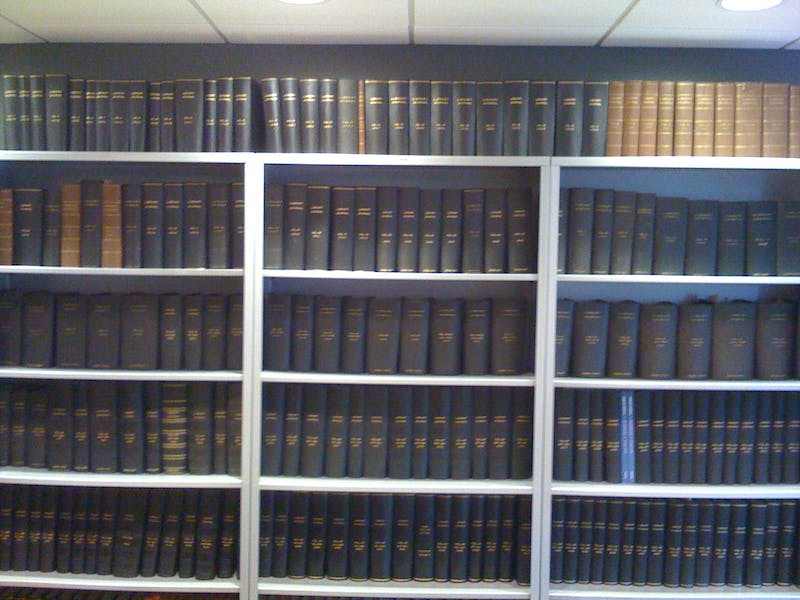
I took this photo in 2008, and showed a recent issue with the very first issue from 1876 from the archives:
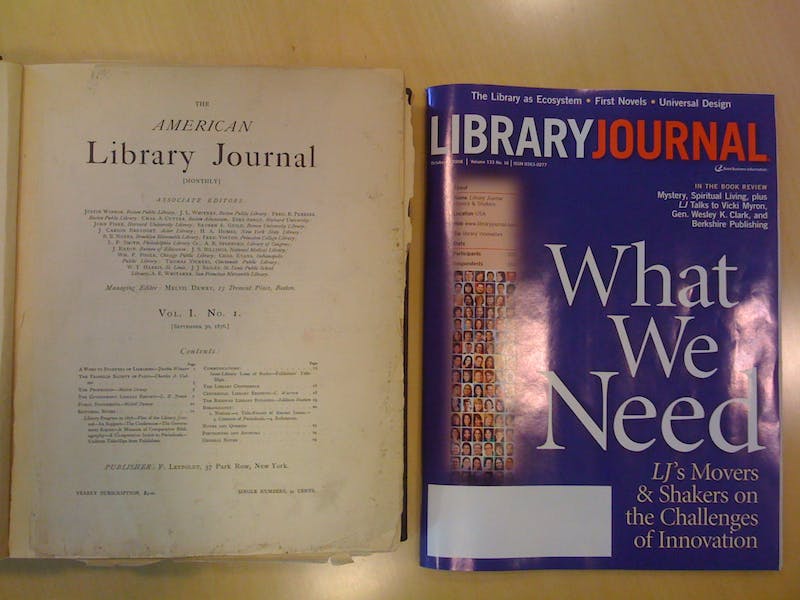
Each publication had their own history, their own culture, their own leadership, and their own relationships to unique industries that were filled with people who spent their entire careers within them.
The values that our parent company defined were:
- Customer Focus
- Boundarylessness
- Valuing Our People
- Passion for Winning
- Innovation
The questions I always had about the Values were that they didn’t always help direct me because they would each potentially conflict with each other. If I have a task, do I:
- Try something new by Innovating, even if that meant there was a big risk because there was no track record?
- Or do I focus on Passion for Winning by doubling down on a tried and true strategy?
- Do I make decisions that put the well being of our employees first. Or do I focus on our customers first?
- Should I work across internal boundaries (Boundarylessness!) for the good of the company overall, or will doing so rub a lot of people the wrong way because I am not going through a proper chain of command, and potentially wasting resources across departments, or even making a redundant effort?
Then one day boxes of these arrived to hand out to all employees:
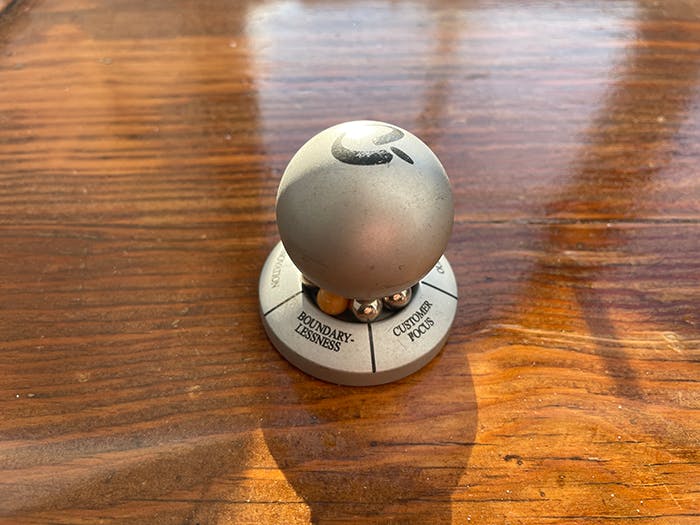
What are they? I guess they are paperweights. The top globe spins, and one of the ball bearings is a cream color, so you can move it to land on one value or another. The early 2000’s were a time of great changes in publishing, and many companies were going through rounds of layoffs every year. I know some employees felt that a lot of money was being spent on “values” while their colleagues could lose their jobs.
Now, I am not sharing this story to be negative. I loved working at that company and with my co-workers. I have wonderful memories and feel incredible gratitude. But I also want to pull important lessons from my experiences there. One thing I heard people expressing at the time was that values come from within, not from some committee. And that values are built on actions, on a history, on experiences. They aren’t just nice sounding words.
Branding and Visuals
Too often, branding is thought of exclusively as consistent visuals. And sure, sometimes it works. When we see a swoosh, we think of Nike. If you are in Target and someone is wearing a red polo shirt, you may think they are an employee. When a brown truck pulls up, you may think it is a UPS delivery.
But for you the writer, branding is not just picking a color palette or using one template on social media. A brand is what you and your work means to someone. And there are two sides to this: who you are and who they are.
At scale, this can seem obvious. “Bruce Springsteen is about….” Or “Tina Turner embodies…” But often the brand is an expression of the artist, and this changes over time. I was listening to an interview with Bruce recently where he talked about how many of his fans bemoan the fact that he grew artistically over the years. He said the biggest insult someone can get in rock and roll is: “You changed! Why did you change?!” His reply, “Yes, I did change. Why didn’t you?” Yet, even as he changed, one could argue that there are elements of who he is and what he creates that are a constant. That is what one may term his “brand.” It’s not the style of shirt he wears, it’s the deeper purpose that drives his music.
And while branding is a thing that we can talk about, sometimes it is really just our way of trying to define an obvious pattern to something more complex.
Your Human Qualities Matter More than Ever
You are not a brand, you are a person. And that will have dramatically more value in your creative career in the near future. If you aren’t aware, AI Art and AI Writing (work created by artificial intelligence or computer algorithms) are reaching levels that may convincingly mimic what a human can create. I’m not debating all the nuances of that today. But let me illustrate the point. I used a popular AI Art generator, and input this simple prompt:
“customers buy in the bookstore photorealistic, book store, cinematic lighting, ultra realistic, highly detailed, 3d, postprocessing, hyperrealistic, HDR, 8k –ar 3:2”
Within a minute, it created these four images:
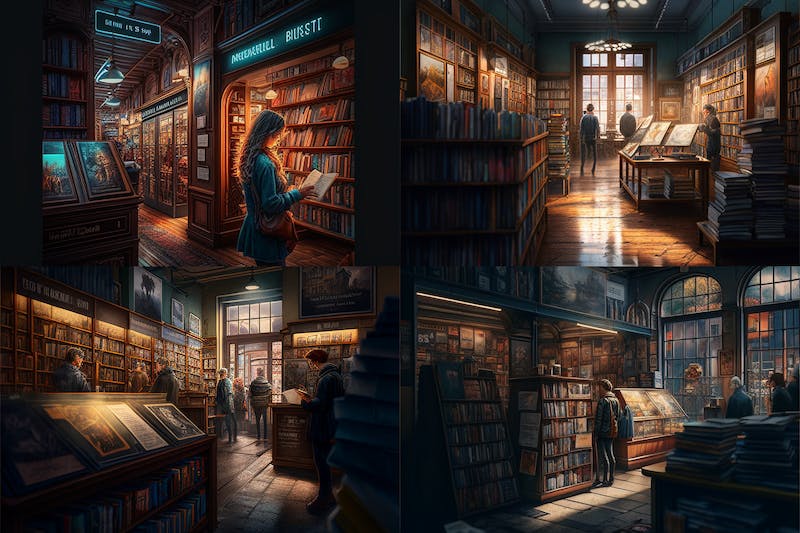
I then had the program enhance the one in the lower right. A minute later this popped out:
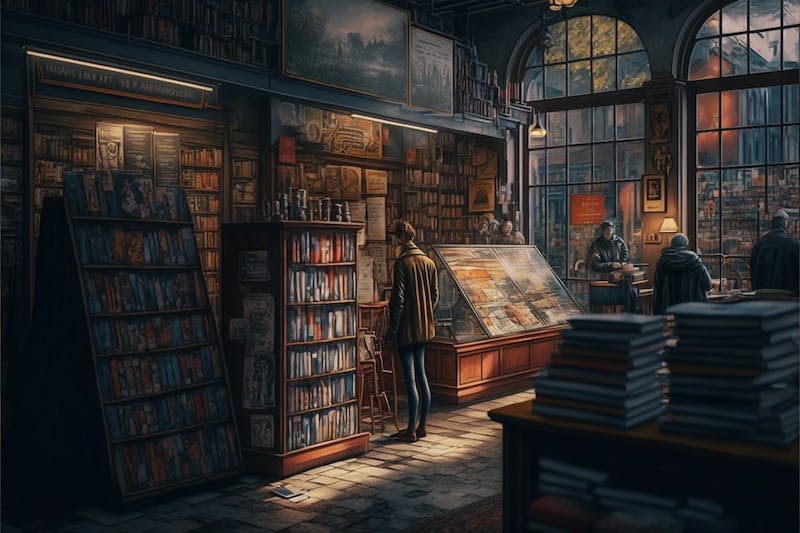
Then I asked it to create variations on that image. Within a minute, it gave me these:
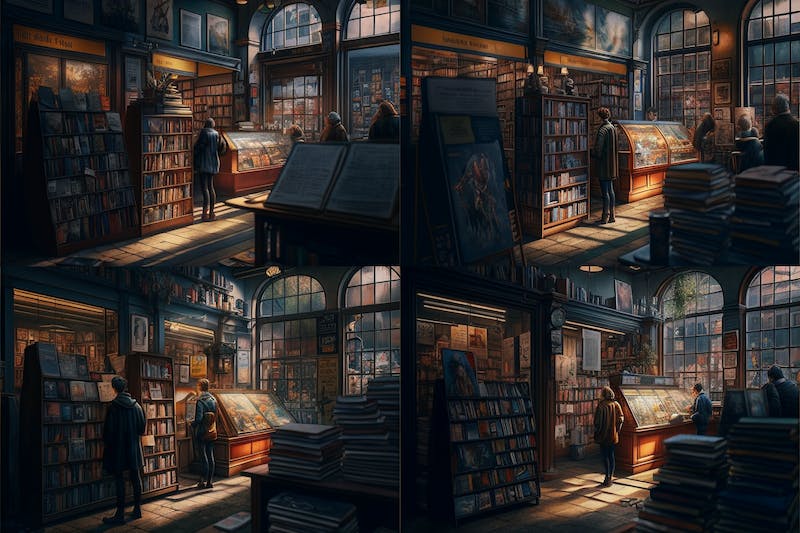
If you look at details, you can find a lot that is wrong. But you can also find a lot that is right, such as a consistent light source and how it would reflect on different surfaces. And what astounds me is the variation among the photos. How in each image, it changed moldings, or a book, or the shape of the glass case, or something very subtle.
Of course, AI is also being developed in writing with similar effects, but I’m not getting into that topic today. Maybe you are saying to yourself that AI Art wouldn’t effect you, because you are a writer. But… what if you could use a program like this to create character sketches, to illustrate virtual paintings of scenes, if you could use it to create a book trailer, a book cover, or social media content to communicate what your book is about, or even use it to help “sell” a concept to an agent or publisher?
The point I want to make is this:
- Computer generated creative work will change some aspects of the marketplace for creative work.
- Writers, artists, and creators will likely feel challenged that a book may take them 3 years to write, and a computer can pop out a book on the same topic, of the same length, in minutes. I’m not implying the books will be comparable, I’m simply pointing out that the very notion of it could create complicated emotions in creators.
- I hear writers and creators bemoan how “crowded the marketplace is” all the time. Computer generated writing and art will only expand that sense a thousandfold.
A few years back, I interviewed artist Jake Parker. Recently he made a video sharing recommendations for how working artists can continue to have a viable career as AI Art becomes more accessible and accepted. His advice:
- Define your competition
- Master your craft
- Embrace consistency
- Build your community
In some ways, this is stuff I talk about all the time because it is the foundation for putting writing at the center of your focus, and how you share as a meaningful next step. In the video he also makes the point of owning your platform, and how most social media channels are constantly shifting their algorithms. What is owning your platform? Having a website, having an email newsletter list, and having multiple ways to reach your audience.
Branding vs Being a Brand
So are you a brand? Or are you just using elements of “branding” to define a consistent style and ethos that is memorable to those who experience what you create?
What you are trying to convey to others are the key elements of how you want your creative work to be known and remembered. It is trying to give a shorthand for the themes that drive you to create, and how it may impact your readers.
Thank you.
-Dan
